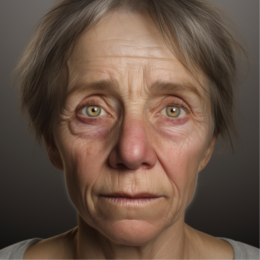Understanding BPD: Causes, Symptoms, and Possible Treatments

Mental health remains a critical component of overall well-being, with numerous conditions impacting the lives of millions across the globe. One such condition, often misunderstood, is borderline personality disorder (BPD). This article sheds light on borderline personality disorder, its causes, signs, co-occurring illnesses, complications, diagnosis, and treatment options.
Understanding BPD can foster greater empathy, reduce stigma, and encourage those impacted to seek help. Whether you’re a professional in the field, someone diagnosed with BPD, a concerned loved one, or simply interested in expanding your mental health knowledge, this comprehensive guide will offer valuable insights into this complex disorder.
Borderline Personality Disorder Overview
Borderline personality disorder (BPD) is a complex mental health condition. It’s characterized by a pattern of ongoing instability in moods, self-image, and interpersonal relationships, which can significantly affect one’s daily functioning. According to the National Institute of Mental Health (2020), this disorder affects around 1.6% of the global population, with some studies suggesting that figures could be as high as 5.9%. Unveiling the mystery of what is borderline personality disorder is instrumental in promoting early detection and intervention, fostering better mental health outcomes for individuals.
Facts and Statistics: Despite its pervasive impact, the onset of BPD usually begins by early adulthood, often by the age of 13 or 14 (National Institute of Mental Health, 2020).
Signs and Symptoms of Borderline Personality Disorder
If you’re wondering what are the symptoms of borderline personality disorder, they can vary greatly between individuals. Common signs include severe emotional instability, characterized by intense mood swings, which can last from a few hours to a few days. A deep-seated fear of abandonment often leads to frantic efforts to avoid real or imagined separation from people they care about. Impulsive, risky behaviors such as substance abuse, reckless driving, and unsafe sex are frequent.
Furthermore, individuals with BPD might experience recurrent suicidal ideation or engage in self-harming behaviors. Their self-image and feelings about themselves can change rapidly and drastically, causing shifts in values, aspirations, and sexual identity. Chronic feelings of emptiness, intense and inappropriate anger, and transient, stress-related paranoid thoughts are also common in those with BPD.
Facts and Statistics: Interestingly, research indicates that women diagnosed with BPD outnumber men at a ratio of 3:1, although more recent studies suggest the gender distribution might be more balanced than previously thought (National Institute of Mental Health, 2020).

Factors that May Cause Borderline Personality Disorder
What causes borderline personality disorder remains unknown, but it’s likely a combination of genetic, biological, and environmental factors.
Facts and Statistics: Fascinatingly, twin studies suggest that BPD is about 40% – 60% heritable, indicating a substantial genetic component in its development (American Psychiatric Association, 2021).
Family History
Family history plays a significant role in the development of BPD. Individuals with a first-degree relative diagnosed with BPD are up to five times more likely to develop the disorder, indicating a potential genetic predisposition (National Institute of Mental Health, 2020).
Facts and Statistics: Those with a family history of BPD are about five times more likely to develop the disorder than those without such a history (National Institute of Mental Health, 2020).Specific Brain Structure
Neuroimaging studies suggest that those with BPD often display structural and functional changes in the brain areas that regulate emotions and impulses, potentially contributing to the volatile emotional state and impulsive behaviors often seen in this disorder.
Facts and Statistics: Neuroimaging studies have found that individuals with BPD have a smaller hippocampus and amygdala, brain regions associated with emotion regulation, compared to those without BPD (American Psychiatric Association, 2021).
Traumatic Childhood
Childhood trauma, such as physical, emotional, or sexual abuse and neglect, significantly increases the risk of BPD. Such traumatic experiences can disrupt a child’s normal development, leading to an intense fear of abandonment and unstable relationships in adulthood.
Facts and Statistics: Around 70% of individuals with BPD report a history of childhood abuse or neglect (American Psychiatric Association, 2021).
Illnesses Co-Occurring with Borderline Personality Disorder
BPD often co-occurs with other mental health disorders. Individuals with BPD may also struggle with major depressive disorder, anxiety disorders, eating disorders, post-traumatic stress disorder (PTSD), and substance use disorders, complicating the clinical picture and treatment.
Facts and Statistics: Up to 85% of individuals with BPD also meet the criteria for another mental illness. Mood disorders such as major depressive disorder and bipolar disorder are particularly common, occurring in 60%-90% of those with BPD (National Institute of Mental Health, 2020).
Complications Caused by Borderline Personality Disorder
Untreated BPD can lead to a multitude of complications. These can include self-injury or suicide, turbulent and broken relationships, job loss or school dropouts, unplanned pregnancies, motor vehicle accidents from reckless driving, and legal issues related to impulsive behaviors.
Facts and Statistics: About 10% of individuals with BPD die by suicide, highlighting the serious and life-threatening complications associated with this disorder (National Institute of Mental Health, 2020).
Diagnosis of Borderline Personality Disorder
Diagnosis of BPD involves a comprehensive psychiatric evaluation by a mental health professional, such as a psychiatrist or psychologist. They consider the patient’s reported symptoms, observed behavior, and rule out other mental disorders that may mimic BPD.
Facts and Statistics: Notably, BPD is often misdiagnosed. A study found that around 40% of individuals initially diagnosed with bipolar disorder were later diagnosed with BPD (National Alliance on Mental Illness, 2021).
How to Treat Borderline Personality Disorder
Borderline personality disorder can be challenging to treat, but successful interventions are available.
Facts and Statistics: Fortunately, around 50% of individuals with BPD improve within two years of starting treatment, and about 80% improve within ten years of starting treatment (National Alliance on Mental Illness, 2021).
Psychotherapy
Psychotherapy, specifically Dialectical Behavior Therapy (DBT), has proven effective for treating BPD. DBT involves teaching patients skills to manage their emotions, tolerate distress, be more mindful of their feelings and thoughts, and improve their relationships.
Facts and Statistics: Studies show that Dialectical Behavior Therapy (DBT), a form of psychotherapy, reduces self-harm behaviors in individuals with BPD by half (National Institute of Mental Health, 2020).
Medications
While there’s no medication specifically approved for BPD, certain medications can help manage specific symptoms. For instance, mood stabilizers, antipsychotics, or antidepressants can alleviate mood swings, impulsivity, and depressive thoughts.
Facts and Statistics: While there’s no specific medication for BPD, medications like mood stabilizers and antipsychotics can help manage symptoms. For instance, a study found that the antipsychotic medication aripiprazole reduces impulsivity in individuals with BPD (National Institute of Mental Health, 2020).
Conclusion
Borderline personality disorder is a serious, often debilitating mental health condition, but with the right understanding and treatment, individuals with BPD can lead productive, fulfilling lives. Recognizing what BPD is, what causes it, and how to treat it effectively is key to managing it. As our understanding of this disorder continues to expand, so do the opportunities for individuals with BPD to live healthy, fulfilling lives. Early diagnosis and intervention are crucial to mitigate the impact of BPD and support those affected on their journey toward recovery.
References:
- National Institute of Mental Health. (2020). Borderline Personality Disorder. Retrieved from https://www.nimh.nih.gov/health/topics/borderline-personality-disorder/index.shtml
- American Psychiatric Association. (2021). What is Borderline Personality Disorder? Retrieved from https://www.psychiatry.org/patients-families/personality-disorders/what-are-personality-disorders
- National Alliance on Mental Illness. (2021). Borderline Personality Disorder. Retrieved from https://www.nami.org/About-Mental-Illness/Mental-Health-Conditions/Borderline-Personality-Disorder
- National Education Alliance for Borderline Personality Disorder. (2021). General Statistics on BPD. Retrieved from https://www.borderlinepersonalitydisorder.org/general-statistics-on-bpd/





